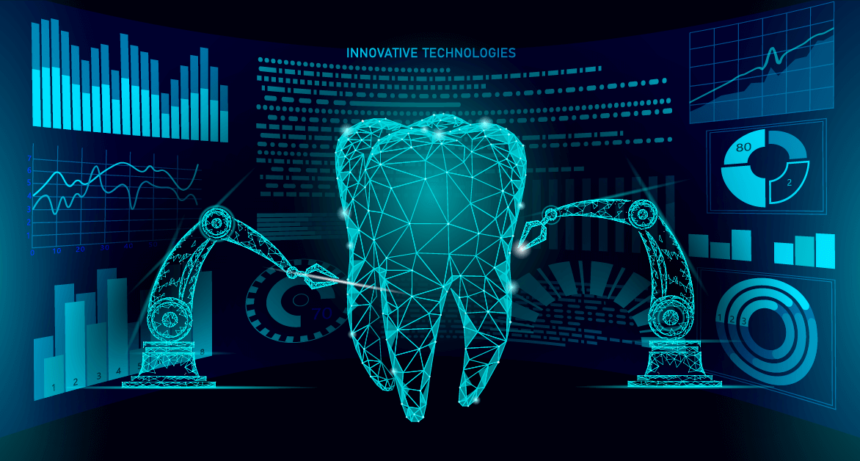1. 3D Radiology
Cone beam 3D imaging is the most important innovation in dentistry over the last handful of years. The radiographs being taken are more clear, more detailed, and you guessed it…they can be seen in three dimensions. This technology has given dental professionals a brand new way to evaluate your teeth, tissue, and surrounding bone. The cone beam machine takes hundreds of small slices of image data and then assembles those slices into the cone beam software. This software allows dentists to become digital contortionists; altering the view of the patient’s mouth to whatever seems applicable. 3D images can be taken for a variety of reasons. Procedures that begin with a 3D scan include Implants, root canals, extractions, or even cases involving sleep apnea and TMJ.
2. Dental Implants
Dental implants have technically been around since 600 AD where the Mayans used pieces of seashells to replace mandibular teeth. With that said, it may seem strange to include a 1400 year old idea among a list of “innovations,” but make no mistake…dental implants have come a long way in the past 10 years let alone the past 1400. What separates placing dental implants today versus just 50 years ago? These days, dental implants come in a myriad of shapes and sizes that are readily available based on the specific needs of the patient and the doctor. This process is augmented by surgical planning software that allows dentists to view a 3D image of a patient’s mouth, where they can test different dental implant sizes within the software based on the measurements taken for that specific patient’s case. Dental implant companies now allow for the development of customized surgical kits that are curated precisely for the patient’s own mouth. These innovations have greatly improved the success rate for doctor’s placing dental implants.
3. Chairside Simulations
If my patients were writing this, the transition from traditional impressions to digital impressions would probably be #1 on their list. Digital impression units such as the iTero machine have sped up the process tenfold while making the experience way more comfortable and accurate. Traditional impressions would work by lining a tray with impression material for the patient to bite down into. The process was a little lengthy and quite uncomfortable. To make matters worse, it wasn’t the most accurate way to get a mold of someone’s teeth either. The iTero however, works with a radiation free laser that scans and creates a topographical map of your teeth in just a few minutes. There’s no uncomfortable tray in their mouths, no impression material, and no second visits because of how accurate the digital impressions are.
4. Lasers
The developing integration of lasers into the dental field (and really all medical fields) may seem like an idea that spawned from a scene in a movie, but they’re actually not that uncommon in surgery. In fact we use them here in our dental office. Lasers can be used to treat hypersensitivity, tooth decay, and gum disease among other procedures. Lasers have even begun to replace scalpels as a surgical tool; providing heightened precision while minimizing the mess during surgery. The post-procedure cauterization of a wound provides an excellent use for lasers as it encourages faster healing and less post operative pain. In fact it’s not uncommon for patients to have no need for pain medication after surgery thanks to laser application. Laser integration in dental has become the successor to electrosurgery which used a red hot cautering tip.
5. Power Whitening
Inquiries about whitening methods are one of the most common questions we receive from patients. It’s a great way to improve the aesthetic of your smile, and over the last 10 years has become a much more comfortable and efficient experience. Power whitening is one of the latest developments in that pursuit. With power whitening, the need for trays and unfortunate taste of whitening pastes are a thing of the past. It requires a combination of a light or laser (yay more lasers) and hydrogen peroxide to whiten the teeth. This procedure is done within the office, so yes you can get your teeth cleaned and whitened in one visit. This along with the actual whitening procedure itself will save the patients a ton of time and discomfort. Patients always come in looking for teeth whitening, assuming they are in for a grueling process of wearing trays for weeks on end; when in end reality they can enjoy immediate results in under an hour.


Leave a Reply